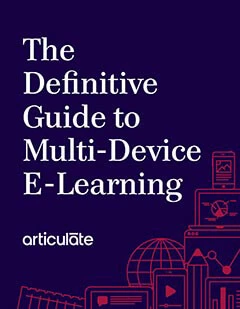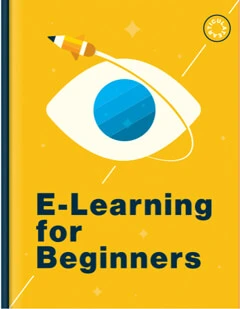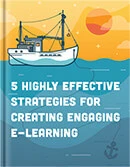Rise 360: Choosing Accessible Components to Create Online Learning
Article Last Updated
This article applies to:
Making your content accessible is more important than ever. That's why we've created this handy list so you can quickly determine if the components you're using to build Rise 360 content meet accessibility guidelines.
Our ultimate goal is content creation in Rise 360 without worrying if its components are accessible. We're working diligently to achieve accessibility for learners without exceptions. That said, there are important guidelines for content creators to keep in mind. For more information on designing accessible courses, check out Rise 360: How to Design an Accessible Course.
While most blocks (and quiz lessons) in Rise 360 are accessible, there are a handful we're continuing to modify to conform with WCAG guidelines.
Currently Inaccessible
This block does not currently comply with WCAG guidelines. We recommend against using it when creating accessible content.
Interactive: Sorting activity
- No accessible instructions or status messages
Mostly Accessible
These blocks are mostly conformant with WCAG guidelines, with some exceptions. You'll need to take extra steps to meet minimum accessibility requirements.
Multimedia: Audio
- No support for closed captions
- If using: Use the caption field to describe the purpose of the media and include text-based alternatives for content—e.g., a text block or accordion interaction.
Multimedia: Video
- No audio description
- If using: Create audio descriptions in a separate app and import them into Rise 360, use the caption field to describe the purpose of the media, include text-based alternatives for content (text block with description), and import closed captions for videos with narration.
Chart: Bar chart, Line chart, Pie chart
- Not directly keyboard accessible
- If using: Provide an alternative, like a table block where you can plot chart data.
Fully Accessible
These blocks are fully conformant with WCAG guidelines.
Text:
- Paragraph
- Paragraph with heading
- Paragraph with subheading
- Heading
- Subheading
- Columns
- Table
Statement:
- Statement A, B, C, D
- Note
Quote:
- Quote A, B, C, D
- Quote on image
- Quote carousel
List:
- Numbered list
- Checkbox list
- Bulleted list
Image:
- Image centered
- Image full width
- Image & text
- Text on image
Gallery:
- Carousel
- Two column grid
- Three column grid
- Four column grid
Multimedia:
- Embed
- Attachment
- Code snippet
Interactive:
- Accordion
- Tabs
- Labeled Graphic
- Process
- Scenario
- Timeline
- Flashcard grid
- Flashcard stack
- Button
- Button stack
- Storyline
- Multiple choice
- Multiple response
- Fill in the blank
- Matching
Divider:
- Continue
- Divider
- Numbered divider
- Spacer
Quiz Lessons:
- Multiple choice
- Multiple response
- Fill in the blank
- Quiz results
- Quiz retry button
- Continue button


